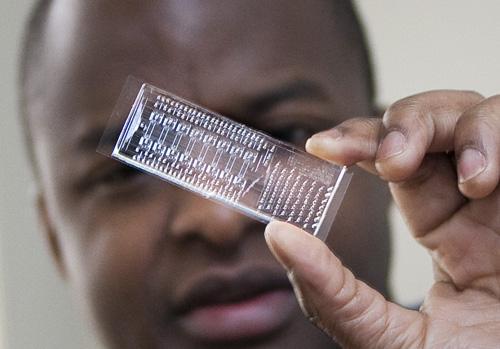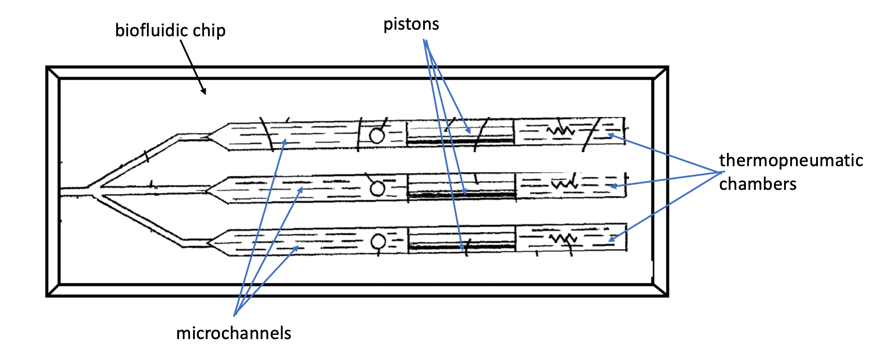In the last decade, considerable research efforts have been devoted to the development of microfluidic systems, such as the Micro Total Analysis Systems (micro TAS). Instruments of such systems integrate microfabricated sensors, flow channels (microchannels), reaction chambers, pumps, and valves with control and data processing. These advances have made it possible to produce miniature, portable and deployable instruments for detecting chemical and biological warfare agents, medical diagnostics, drug discovery, transdermal drug delivery via microneedles, and DNA analysis/sequencing. The following invention offers a new approach for performing pumping and valving operations in microfluidic systems.
Researchers at LLNL have created a new technology for performing pumping and valving operations in microfabricated fluidic systems. Traditional microfabricated devices have some disadvantages that defeat the advantages of miniaturization. For example, they require high power and voltage, and they need specific fluids to work properly and to be broadly applicable. The technology described here uses low power, high pressure approach to slide the device's polymer plug within its microchannel, in turn controlling complex fluidic processes on-chip. This method is more efficient than current micro pumping and valving technology and addresses unmet needs for a totally integrated on-chip microfluidic system. One of the main advantages of this technology is the lower power consumption. The device consumes zero power when idle, and minimal power over a short time of period when activated. In addition, the valve requires no power when the channel is in the open or closed states. In other technologies, most valves require power in one state or the other. Other advantages of this technology are its compact design, low cost of production, and the fluid can be stored and sealed within the device.
The figure shows an integrated microsyringe manifold with three pumps for injecting different solutions into a common mixing/reaction chamber.
- More efficient than current micro pumping and valving technology
- Lower power consumption- consumes zero power when idle, and minimal power over a short time of period when activated
- Compact design, low cost of production, and the fluid can be stored and sealed within the device
- Portable and deployable instruments for detecting chemical and biological agents
- Integration into medical diagnostic microchips
- Drug delivery via microneedle transdermal patch
- Drug discovery
- DNA analysis/sequencing
- Cellular & viral cytometry
- PCR amplification processes
LLNL has obtained a patent (US Patent 7,025,323) covering this technology (LLNL Internal Case # IL-10630)



